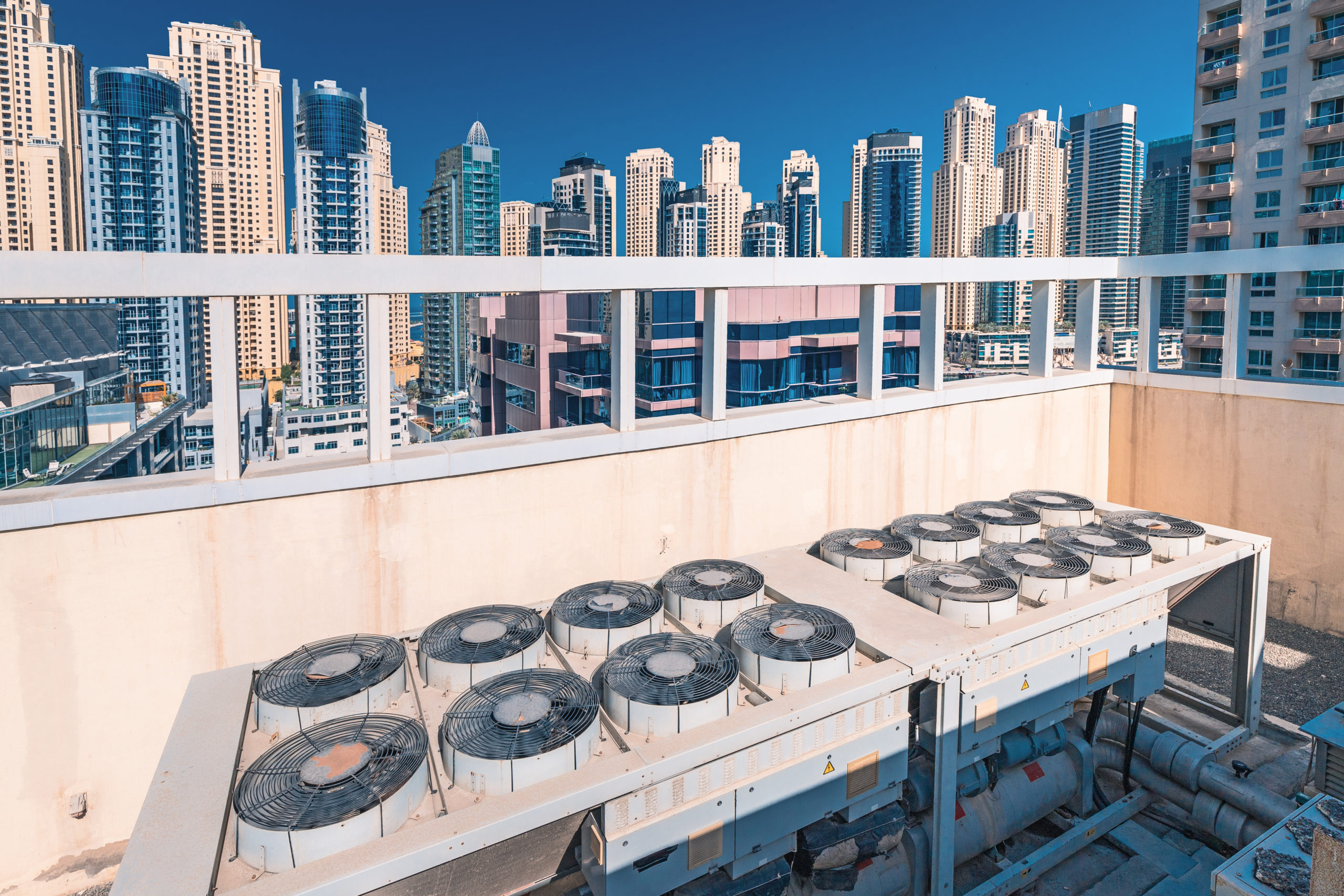The pandemic put the biggest spotlight on why healthy buildings are essential. As a result, attention has shifted to focusing on ways to improve indoor air quality in commercial office buildings.
In fact, improving indoor air quality in commercial office buildings has become such a focus that the Biden-Harris Administration recently launched its National COVID-19 Preparedness Plan. It’s a roadmap to move the country forward safely while continuing to fight COVID-19. As part of that plan, the administration has launched the Clean Air in Buildings Challenge as a call to action for leaders, building owners, and operators of all types to assess their indoor air quality and make ventilation and air filtration improvements to help keep occupants safe.
What is Indoor Air Quality?
Indoor air quality (IAQ) refers to the air quality within and around buildings, according to the EPA. It’s especially important as it relates to the health and comfort of your tenants. Healthy indoor air quality is free from significant odors, dust, and other contaminants, according to the CDC. Healthy indoor air quality also means air is circulated to prevent stuffiness without making drafts. Additionally, healthy indoor air quality means your building’s temperature and humidity are appropriate for the current season.
Healthy indoor air quality is essential for your tenants’ comfort. The CDC and the American Society of Heating and Air-Conditioning Engineers (ASHRAE) have even set indoor air quality standards for commercial buildings. So, it’s up to property teams to make sure their buildings meet or exceed these indoor air quality standards.
Read on for five ways to improve indoor air quality in commercial office buildings.
5 Ways to Improve Indoor Air Quality in Commercial Office Buildings
There are several ways to improve indoor air quality in commercial office buildings. These quick tips can help improve your building’s indoor air quality without breaking the bank.
1. Eliminate Sources of Pollution
Indoor pollution sources that release gases or particles are a top cause of indoor air quality problems, according to the EPA. Some of these sources of pollution can include:
- Building insulation that contains asbestos
- New flooring or upholstery installations
- Cabinets or other fixtures made from pressed wood
- Certain cleaning products
- Poorly maintained HVAC systems
Identifying and eliminating pollutant sources can be a low-cost way to improve indoor air quality in commercial office buildings.
2. Improve Your Building’s Ventilation
First, a little background: An air handling unit, or AHU, is HVAC equipment designed to regulate and circulate air throughout a space. Most air handling units distribute a blend of outdoor air and recirculated indoor air. The amount of outdoor air considered adequate for proper ventilation varies over time. That’s why it’s important to keep up with current CDC and ASHRAE standards.
Some ways the CDC has identified to improve ventilation include:
- Open outdoor air dampers beyond minimum settings to reduce or eliminate HVAC air recirculation
- When weather allows, open windows and doors to increase outdoor air flow
- Rebalance or adjust HVAC systems to increase total air flow
- Turn off any demand-controlled ventilation (DCV) controls that reduce air supply based on occupancy or temperature during occupied hours
- Run the HVAC system at maximum outside air flow for two hours before and after the building is occupied
3. Focus on Thermal Comfort
ASHRAE Standard 55-1981 outlines the temperature and humidity ranges that are comfortable for most people engaged in largely sedentary activities, such as in a commercial office building.
The CDC gives some insight, “When the heating and cooling needs of rooms within a single zone change at different rates, rooms that are served by a single thermostat may be at different temperatures. If air is not properly mixed by the ventilation system, the temperature near the ceiling can be several degrees warmer than at floor level. Even if air is properly mixed, uninsulated floors over unheated spaces can create discomfort in some climate zones.”
(See #5 below to learn how an intelligent HVAC management system can help you leverage AI and data inputs to make real-time adjustments so you can maximize thermal comfort for tenants.)
4. Maintain Your HVAC System
Increased ventilation and air filtration has been proven to improve indoor air quality in commercial office buildings and greatly reduce the risk of virus transmission indoors. A well-managed HVAC system is critical.
Your specific HVAC maintenance program will depend on the system’s age, condition, size, brand, and frequency of use. But there are a few universal tips property managers can use to optimize their HVAC systems without breaking the bank. For instance, if your unit is older (the average lifespan of a commercial HVAC unit is 15-20 years with proper maintenance), consider replacement. Otherwise, investigate smaller-scale upgrades and have a preventative maintenance program in place.
Additionally, regularly maintaining your ductwork is crucial to prevent dust, mold, pollen, and pest debris. If air ducts are neglected, these agents can accumulate to the point where they start to re-enter your building’s air.
5. Implement an Intelligent HVAC Management System
Keeping up with the latest CDC and ASHRAE standards on your own can be difficult – especially when property teams are already stretched thin for time. An intelligent HVAC management system with a virtual engineer partner can help streamline operations.
This sort of technology can improve operational efficiencies, help your portfolio meet its sustainability goals, and increase NOI – all with no capital investment.
An intelligent HVAC management system will monitor all HVAC equipment 24/7 and can:
- Integrate with BMS/BAS systems
- Monitor and learn equipment operations
- Leverage AI and data inputs to make real-time micro-adjustments
- Optimize every piece of HVAC equipment
So that you can:
- Exceed indoor air quality standards
- Maximize tenant comfort
- Reduce energy consumption and costs
Several innovative CRE companies are using an intelligent HVAC management system to increase indoor air quality, cut energy consumption, and save big. Read their success stories – including how one company improved indoor air quality 100% – in the eBook, “4 CRE Companies Innovating for Sustainable Office Buildings.”















